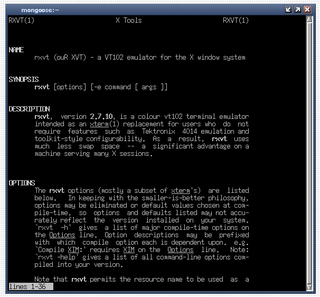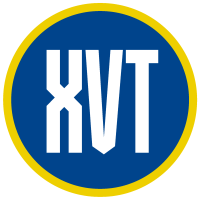Related Research Articles
Software testing is the act of examining the artifacts and the behavior of the software under test by validation and verification. Software testing can also provide an objective, independent view of the software to allow the business to appreciate and understand the risks of software implementation. Test techniques include, but are not necessarily limited to:
The waterfall model is a breakdown of project activities into linear sequential phases, meaning they are passed down onto each other, where each phase depends on the deliverables of the previous one and corresponds to a specialization of tasks. The approach is typical for certain areas of engineering design. In software development, it tends to be among the less iterative and flexible approaches, as progress flows in largely one direction through the phases of conception, initiation, analysis, design, construction, testing, deployment and maintenance. The waterfall model is the earliest SDLC approach that was used in software development.

A software bug is an error, flaw or fault in the design, development, or operation of computer software that causes it to produce an incorrect or unexpected result, or to behave in unintended ways. The process of finding and correcting bugs is termed "debugging" and often uses formal techniques or tools to pinpoint bugs. Since the 1950s, some computer systems have been designed to deter, detect or auto-correct various computer bugs during operations.
In software engineering, version control is a class of systems responsible for managing changes to computer programs, documents, large web sites, or other collections of information. Version control is a component of software configuration management.
In software engineering, software configuration management is the task of tracking and controlling changes in the software, part of the larger cross-disciplinary field of configuration management. SCM practices include revision control and the establishment of baselines. If something goes wrong, SCM can determine the "what, when, why and who" of the change. If a configuration is working well, SCM can determine how to replicate it across many hosts.

Open Firmware is a standard defining the interfaces of a computer firmware system, formerly endorsed by the Institute of Electrical and Electronics Engineers (IEEE). It originated at Sun Microsystems, where it was known as OpenBoot, and has been used by vendors including Sun, Apple, IBM and ARM. Open Firmware allows the system to load platform-independent drivers directly from a PCI device, improving compatibility.
The history of software configuration management (SCM) in computing can be traced back as early as the 1950s, when CM, originally for hardware development and production control, was being applied to software development. The first software configuration management was most likely done manually. Eventually, software tools were written to manage software changes. History records tend to be based on tools and companies, and lend concepts to a secondary plane.

Embedded software is computer software, written to control machines or devices that are not typically thought of as computers, commonly known as embedded systems. It is typically specialized for the particular hardware that it runs on and has time and memory constraints. This term is sometimes used interchangeably with firmware.

Rxvt is a terminal emulator for the X Window System, and in the form of a Cygwin port, for Windows.
Software maintenance in software engineering is the modification of a software product after delivery to correct faults, to improve performance or other attributes.
The Programmer's Workbench (PWB/UNIX) is an early, now discontinued, version of the Unix operating system that had been created in the Bell Labs Computer Science Research Group of AT&T. Its stated goal was to provide a time-sharing working environment for large groups of programmers, writing software for larger batch processing computers.
In the context of software engineering, software quality refers to two related but distinct notions:
Source Code Control System (SCCS) is a version control system designed to track changes in source code and other text files during the development of a piece of software. This allows the user to retrieve any of the previous versions of the original source code and the changes which are stored. It was originally developed at Bell Labs beginning in late 1972 by Marc Rochkind for an IBM System/370 computer running OS/360.
Software quality assurance (SQA) is a means and practice of monitoring all software engineering processes, methods, and work products to ensure compliance against defined standards. It may include ensuring conformance to standards or models, such as ISO/IEC 9126, SPICE or CMMI.
In software development, a codebase is a collection of source code used to build a particular software system, application, or software component. Typically, a codebase includes only human-written source code files; thus, a codebase usually does not include source code files generated by tools or binary library files, as they can be built from the human-written source code. However, it generally does include configuration and property files, as they are the data necessary for the build.
Software visualization or software visualisation refers to the visualization of information of and related to software systems—either the architecture of its source code or metrics of their runtime behavior—and their development process by means of static, interactive or animated 2-D or 3-D visual representations of their structure, execution, behavior, and evolution.

XVT is a software development environment for building cross-platform GUI applications in C or C++. XVT allows developers to graphically lay out an application's GUI, and provides cross-platform libraries to aid development.
DevOps is a methodology in the software development and IT industry. Used as a set of practices and tools, DevOps integrates and automates the work of software development (Dev) and IT operations (Ops) as a means for improving and shortening the systems development life cycle. DevOps is complementary to agile software development; several DevOps aspects came from the agile way of working.
Software archaeology or source code archeology is the study of poorly documented or undocumented legacy software implementations, as part of software maintenance. Software archaeology, named by analogy with archaeology, includes the reverse engineering of software modules, and the application of a variety of tools and processes for extracting and understanding program structure and recovering design information. Software archaeology may reveal dysfunctional team processes which have produced poorly designed or even unused software modules, and in some cases deliberately obfuscatory code may be found. The term has been in use for decades.
Interleaved deltas, or SCCS weave is a method used by the Source Code Control System to store all revisions of a file. All lines from all revisions are "woven" together in a single block of data, with interspersed control instructions indicating which lines are included in which revisions of the file. Interleaved deltas are traditionally implemented with line oriented text files in mind, although nothing prevents the method from being applied to binary files as well.
References
- ↑ Rochkind, Marc. “The source code control system (SCCS).” IEEE Transactions on Software Engineering 1, no. 4 (1975).
- ↑ "An extensible virtual toolkit (XVT) for portable GUI applications," Compcon Spring '92. Thirty-Seventh IEEE Computer Society International Conference, https://ieeexplore.ieee.org/document/186760